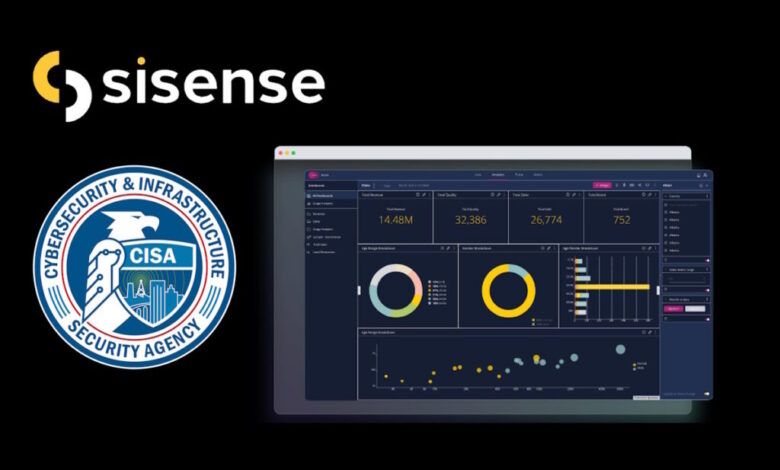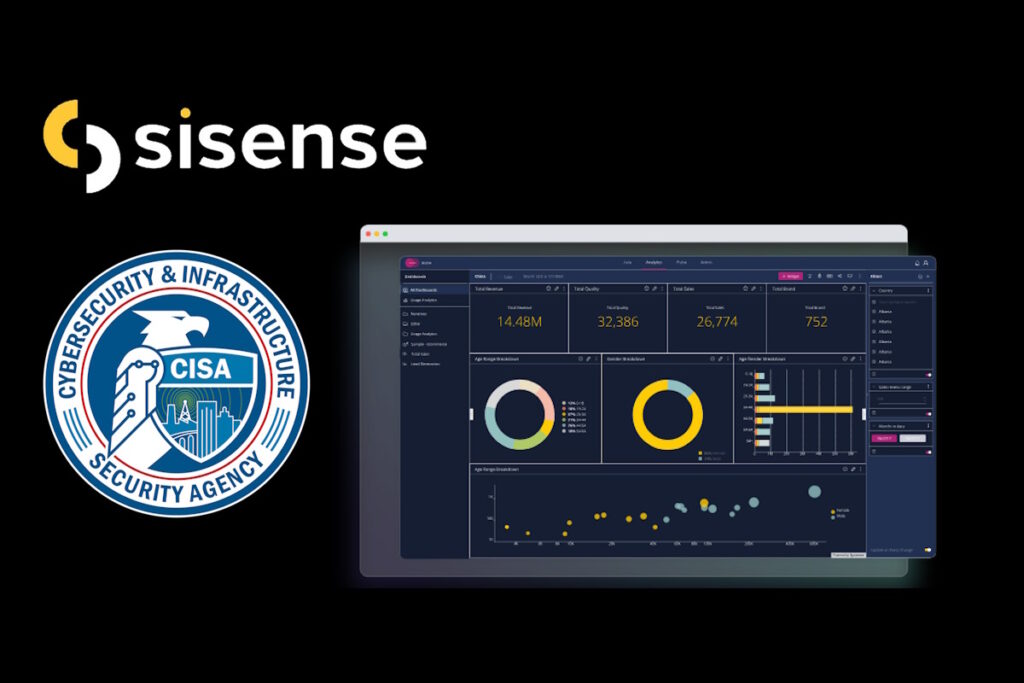
CISA Warns Chemical Facilities About Possible Data Breach
CISA warns chemical facilities in America about possible data breaches – a chilling announcement that underscores the vulnerability of our critical infrastructure. This isn’t just about sensitive data; it’s about potential sabotage, economic disruption, and even public safety. The warning highlights a critical need for improved cybersecurity practices across the chemical industry, prompting a crucial conversation about the threats, vulnerabilities, and necessary defenses.
The alert focuses on the potential for sophisticated attacks targeting sensitive information like operational data, chemical formulas, and employee details. The consequences of a successful breach could range from financial losses and reputational damage to compromised supply chains and even physical harm. Understanding the potential threat actors, their motives, and their methods is key to mitigating this risk.
We’ll explore the specific vulnerabilities exploited, the recommended mitigation strategies, and the government’s role in supporting the chemical industry’s cybersecurity efforts.
CISA Warning Details

The Cybersecurity and Infrastructure Security Agency (CISA) recently issued a warning regarding the potential for significant data breaches targeting chemical facilities across the United States. This warning highlights the vulnerability of these facilities to cyberattacks and the potentially devastating consequences of successful intrusions. The advisory urges immediate action to bolster cybersecurity defenses and prevent a catastrophic event.The CISA warning emphasizes the critical need for improved cybersecurity practices within the chemical sector.
It’s not simply a matter of protecting sensitive business information; the potential consequences extend far beyond financial losses, impacting public safety and national security. The agency highlights the specific vulnerabilities exploited by threat actors and offers actionable steps to mitigate these risks.
Targeted Chemical Facilities
The warning doesn’t specifically name individual companies, but it applies broadly to facilities involved in the manufacturing, storage, and transportation of hazardous chemicals. This includes facilities producing chemicals for various industrial applications, as well as those involved in the refining and distribution of petroleum products. Essentially, any facility handling materials that could pose a significant threat if improperly managed or released is considered a potential target.
Potential Consequences of a Data Breach
A successful cyberattack on a chemical facility could have far-reaching and devastating consequences. Compromised safety systems could lead to accidental releases of hazardous materials, causing environmental damage, injuries, or even fatalities. Disruption of operations could cause significant economic losses and shortages of essential goods. Furthermore, theft of intellectual property could compromise the competitive advantage of the affected company and potentially provide adversaries with valuable information for further attacks.
The potential for extortion, through ransomware attacks or the threat of releasing sensitive data, is also a major concern. The cascading effects of such an attack could significantly impact supply chains and national infrastructure.
Examples of Sensitive Data at Risk
The sensitive data at risk in a chemical facility breach is extensive and highly consequential. This includes process control system (PCS) schematics, safety protocols, chemical formulas, inventory levels of hazardous materials, emergency response plans, employee credentials, and customer data. Compromise of PCS schematics could allow attackers to manipulate industrial control systems, potentially leading to catastrophic events. The theft of chemical formulas could be used for industrial espionage or to produce dangerous materials.
Access to emergency response plans could severely hamper a facility’s ability to respond effectively to an incident. The release of employee personal information could lead to identity theft and other related crimes. The sheer breadth and impact of this sensitive data underscore the critical need for robust cybersecurity measures.
Potential Threat Actors

The recent CISA warning highlights the vulnerability of American chemical facilities to data breaches. Understanding the potential threat actors behind these attacks is crucial for effective mitigation strategies. These actors range from sophisticated state-sponsored groups to opportunistic cybercriminals, each with distinct motives and capabilities.The motives driving these attacks are multifaceted. Espionage is a significant driver, with state-sponsored actors seeking to steal intellectual property related to chemical processes, formulas, or production techniques.
This stolen information can provide a strategic advantage, allowing for the development of superior products or the undermining of a competitor’s capabilities. Sabotage is another key motivator, where malicious actors aim to disrupt operations, cause physical damage, or even trigger environmental disasters through the manipulation of critical infrastructure systems. Finally, financial gain is a common impetus for cybercriminals, who may target chemical facilities for valuable data like customer information, financial records, or intellectual property that can be sold on the dark web.
Types of Threat Actors and Their Methods
Several types of threat actors pose a threat to chemical facilities. State-sponsored actors, often possessing advanced capabilities and significant resources, may employ sophisticated techniques like spear-phishing campaigns targeting employees with highly tailored emails containing malicious attachments or links. They may also utilize zero-day exploits – vulnerabilities unknown to the vendor – to gain unauthorized access to systems. In contrast, financially motivated cybercriminals might employ more readily available tools and techniques, such as exploiting known vulnerabilities in software or using brute-force attacks to guess passwords.
Organized crime groups often leverage ransomware attacks, encrypting critical data and demanding a ransom for its release. Activist groups may also be involved, aiming to disrupt operations or expose perceived unethical practices through data leaks.
CISA’s warning about potential data breaches at US chemical facilities is a serious wake-up call for industrial cybersecurity. Strengthening data protection requires robust, adaptable systems, and that’s where exploring solutions like those discussed in this article on domino app dev the low code and pro code future becomes crucial. Ultimately, improving security across the board is essential to prevent future incidents like the ones CISA is highlighting.
Comparison of Threat Actor Capabilities
State-sponsored groups generally possess superior capabilities compared to other threat actors. They often have access to advanced malware, extensive resources for intelligence gathering, and skilled personnel capable of bypassing sophisticated security measures. Their attacks are typically highly targeted and persistent, aiming for long-term access and data exfiltration. Financially motivated actors, on the other hand, often rely on readily available tools and exploit vulnerabilities in widely used software.
Their attacks tend to be opportunistic and less sophisticated, focusing on quick gains. Activist groups may lack the technical expertise of other actors but can still cause significant damage through data leaks and public exposure. The methods employed by each group often reflect their resources and objectives. For example, a state-sponsored group might use a sophisticated, multi-stage attack involving spear phishing, malware deployment, and data exfiltration over an extended period, while a financially motivated group might opt for a faster, simpler ransomware attack.
The scale and complexity of attacks vary significantly across these different threat actors.
Cybersecurity Vulnerabilities: Cisa Warns Chemical Facilities In America About Possible Data Breach
Chemical facilities, with their complex processes and interconnected systems, are prime targets for cyberattacks. A successful breach can lead to significant disruptions, environmental damage, and even loss of life. Understanding the common vulnerabilities within these facilities is crucial for effective mitigation. This section will explore some key weaknesses and suggest strategies for strengthening cybersecurity defenses.
Common Vulnerabilities in Chemical Facilities, Cisa warns chemical facilities in america about possible data breach
Chemical facilities often rely on a mix of legacy and modern systems, creating a complex network vulnerable to various threats. Outdated software, insecure configurations, and a lack of robust security protocols are frequently exploited. These vulnerabilities can range from simple human errors to sophisticated attacks targeting specific weaknesses.
Examples of Outdated Software and Insecure Configurations
One common vulnerability is the use of outdated industrial control systems (ICS) software. These systems, often responsible for critical processes, may lack essential security patches, making them easy targets for malware or unauthorized access. Another example is the use of default passwords on network devices, a simple yet easily exploitable weakness. Insecure network configurations, such as a lack of firewalls or intrusion detection systems, further exacerbate the risk.
For instance, a facility might use an outdated version of a Supervisory Control and Data Acquisition (SCADA) system that hasn’t received security updates in years, making it vulnerable to known exploits. Or, they might have networked devices with default passwords that are readily available online, allowing malicious actors easy access to sensitive data and control systems.
Common Vulnerabilities and Their Impact
| Vulnerability Type | Description | Impact | Mitigation Strategy |
|---|---|---|---|
| Outdated Software | Use of legacy systems lacking security patches. | Malware infections, system compromise, process disruption. | Regular software updates, patching, and vulnerability scanning. |
| Weak Passwords | Use of default or easily guessable passwords. | Unauthorized access, data breaches, system control. | Strong password policies, multi-factor authentication. |
| Insecure Network Configurations | Lack of firewalls, intrusion detection/prevention systems. | Network intrusions, data theft, denial-of-service attacks. | Implement firewalls, intrusion detection/prevention systems, and secure network segmentation. |
| Lack of Access Control | Inadequate user access permissions and privileges. | Unauthorized access to sensitive data and systems. | Implement robust access control policies, least privilege access, and regular access reviews. |
Importance of Regular Security Audits and Penetration Testing
Regular security audits and penetration testing are crucial for identifying and mitigating vulnerabilities before they can be exploited. Security audits provide a comprehensive assessment of an organization’s security posture, identifying weaknesses in policies, procedures, and technologies. Penetration testing simulates real-world attacks to uncover exploitable vulnerabilities and assess the effectiveness of security controls. The combination of these activities provides a proactive approach to cybersecurity, significantly reducing the risk of successful attacks.
For example, a penetration test might reveal that an unpatched server is accessible from the internet, allowing an attacker to gain unauthorized access to the facility’s network. A security audit might reveal weaknesses in employee training on cybersecurity best practices, leading to human error that could be exploited by malicious actors.
Recommended Mitigation Strategies
The recent CISA warning highlights the critical need for chemical facilities to bolster their cybersecurity defenses. A proactive approach, incorporating robust security measures and employee training, is essential to mitigate the risk of data breaches and the potentially devastating consequences they can bring. This section Artikels practical strategies to enhance your facility’s security posture.
Implementing a multi-layered security approach is crucial. This involves a combination of technical controls, robust security policies, and a well-trained workforce. No single solution provides complete protection; a layered approach maximizes your chances of preventing and responding to attacks.
Data Security Best Practices and Incident Response
Following best practices for data security and incident response is paramount. A well-defined plan allows for a swift and effective response in the event of a breach, minimizing damage and downtime. These best practices are not merely suggestions; they represent the foundation of a robust security posture.
- Implement strong password policies and regularly enforce password changes.
- Utilize robust antivirus and anti-malware software, updated regularly.
- Regularly back up critical data to an offsite location.
- Develop and regularly test a comprehensive incident response plan.
- Conduct regular security audits and vulnerability assessments.
- Segment your network to limit the impact of a potential breach.
- Monitor network traffic for suspicious activity using intrusion detection systems (IDS).
The Importance of Employee Training
Human error remains a significant factor in many data breaches. Comprehensive employee training programs are essential to mitigate this risk. Training should not be a one-time event but rather an ongoing process that keeps employees updated on the latest threats and best practices.
Effective training programs should cover topics such as phishing awareness, safe password management, recognizing and reporting suspicious activity, and understanding the company’s security policies. Regular phishing simulations can help assess employee awareness and reinforce training effectiveness. For example, a simulated phishing email campaign could test employees’ ability to identify and report malicious links or attachments.
Implementing Multi-Factor Authentication (MFA)
Multi-factor authentication significantly enhances security by requiring multiple forms of verification to access systems and data. This layered approach makes it exponentially more difficult for unauthorized individuals to gain access, even if they possess a stolen password.
- Choose an MFA method: Select a suitable MFA method for your organization. Options include time-based one-time passwords (TOTP), push notifications, security keys, or biometrics.
- Deploy MFA across critical systems: Prioritize implementing MFA on systems containing sensitive data, such as those managing process control systems or containing customer information.
- Provide comprehensive employee training: Educate employees on the importance of MFA and how to use the chosen method effectively. Address potential challenges and provide clear instructions.
- Monitor and manage MFA: Regularly review MFA usage and effectiveness. Track successful and failed login attempts to identify potential issues or vulnerabilities.
- Regularly update MFA settings: Keep MFA software and related applications updated to patch security vulnerabilities and improve performance.
Government Response and Support

CISA’s warning about potential data breaches at American chemical facilities wasn’t just a heads-up; it signaled a significant commitment to collaborative action. The agency immediately sprang into action, offering a range of support and resources designed to bolster the cybersecurity posture of these critical infrastructure facilities. This coordinated response highlights the seriousness of the threat and the government’s dedication to protecting both national security and public safety.The support offered by CISA to chemical facilities encompasses various crucial areas.
They provide direct technical assistance, helping facilities assess their vulnerabilities, implement appropriate security measures, and develop incident response plans. This includes access to CISA’s expertise in cybersecurity best practices, threat intelligence sharing, and vulnerability management tools. Furthermore, CISA actively works to facilitate information sharing between the chemical industry and other critical infrastructure sectors, fostering a collaborative approach to threat mitigation.
They also offer training and educational resources, helping to build a more resilient and informed workforce within the chemical industry. This multifaceted approach ensures that facilities receive the support they need, tailored to their specific needs and capabilities.
CISA’s Specific Actions and Resources
CISA’s response included the immediate dissemination of the warning, followed by the proactive outreach to chemical facilities. This outreach involved personalized consultations, providing tailored advice based on individual facility profiles and risk assessments. The agency leveraged its existing partnerships with industry associations and private sector cybersecurity firms to amplify the message and ensure effective dissemination of resources. Additionally, CISA made available a suite of cybersecurity tools and resources, including vulnerability scanning tools, security awareness training materials, and incident response playbooks.
These resources were specifically tailored to the unique challenges faced by chemical facilities, reflecting a deep understanding of the sector’s specific vulnerabilities.
Collaboration with Other Government Agencies
The response to the potential data breach threat wasn’t limited to CISA. Other federal agencies, such as the FBI, the Department of Homeland Security (DHS), and the Environmental Protection Agency (EPA), played crucial roles. The FBI, for instance, focused on investigating potential threat actors and gathering intelligence to understand the nature and scope of the threat. DHS provided broader coordination and support across various sectors, ensuring a unified national response.
The EPA, with its expertise in chemical safety and environmental regulations, played a critical role in assessing the potential consequences of a successful cyberattack, particularly concerning the release of hazardous materials. This inter-agency collaboration is critical for a comprehensive and effective response to cybersecurity threats affecting critical infrastructure.
Legislative and Regulatory Changes
While the CISA warning itself didn’t directly lead to immediate legislative changes, it reinforced the need for stronger cybersecurity regulations within the chemical industry. The warning highlighted existing gaps in cybersecurity preparedness and spurred discussions about potential improvements to existing regulations and the development of new ones. This includes discussions around mandatory cybersecurity standards for chemical facilities, increased transparency requirements for reporting cyber incidents, and improved mechanisms for information sharing between the private sector and government agencies.
This ongoing dialogue emphasizes the need for a continuous evolution of regulatory frameworks to keep pace with the ever-evolving threat landscape.
Public-Private Partnerships
The effectiveness of the government’s response is significantly enhanced by strong public-private partnerships. CISA actively collaborates with industry associations, cybersecurity firms, and individual chemical facilities to share threat intelligence, develop best practices, and conduct joint cybersecurity exercises. These partnerships ensure that the government’s resources and expertise are effectively leveraged to protect critical infrastructure. For example, CISA’s work with the American Chemistry Council (ACC) provides a crucial platform for disseminating information, coordinating responses, and fostering a shared understanding of cybersecurity challenges.
These collaborative efforts are essential for building a more resilient and secure chemical industry.
Impact on the Chemical Industry
A widespread data breach targeting chemical facilities in America could have devastating consequences, rippling through the industry and impacting the broader economy. The sheer volume and sensitivity of data held by these facilities – from proprietary formulas and manufacturing processes to customer information and supply chain logistics – makes them particularly vulnerable to significant financial and reputational harm. The potential for disruption and the cascading effects on various sectors highlight the critical need for robust cybersecurity measures.The economic impact of a large-scale data breach on the chemical industry could be substantial.
Direct costs associated with incident response, legal fees, regulatory fines, and remediation efforts would be significant. Beyond these immediate expenses, there are indirect costs to consider, such as lost productivity, damaged business relationships, and diminished investor confidence. A major breach could lead to decreased market share and a decline in profitability, potentially impacting the industry’s overall financial stability.
Consider the 2017 NotPetya ransomware attack, which caused billions of dollars in damage across various industries, including manufacturing – a sector closely linked to the chemical industry. The potential for similar losses in the chemical sector is a very real threat.
Reputational Damage and Loss of Consumer Trust
A data breach involving sensitive customer data or the compromise of proprietary chemical formulas could severely damage the reputation of affected companies. Loss of consumer trust, particularly in the wake of a publicized incident involving the release of personal information or the potential for chemical misuse, could lead to boycotts, decreased sales, and long-term damage to brand image. This reputational damage could extend beyond the directly affected companies to impact the entire chemical industry, fostering a climate of distrust and skepticism among consumers.
The long-term recovery from such a blow to reputation could be arduous and expensive, requiring significant investment in rebuilding trust and transparency.
Supply Chain Disruptions and Economic Instability
A successful cyberattack could significantly disrupt chemical supply chains. The compromise of crucial operational data, such as inventory levels, transportation schedules, and production processes, could halt or severely delay the manufacturing and distribution of essential chemical products. This could have a cascading effect, impacting industries that rely on these chemicals, potentially leading to shortages, price increases, and widespread economic instability.
For example, a disruption to the supply of essential plastics or pharmaceuticals, both heavily reliant on chemical inputs, could have far-reaching consequences for numerous sectors.
Ripple Effects of a Data Breach: A Visual Representation
Imagine a diagram with a central circle representing a chemical facility that has experienced a data breach. From this central circle, radiating outwards are several interconnected circles representing different impacted areas. One circle could depict “Financial Losses,” showcasing direct costs like investigation and remediation, and indirect costs like lost productivity and decreased market share. Another circle represents “Reputational Damage,” illustrating the loss of consumer trust and negative media coverage.
A third circle shows “Supply Chain Disruptions,” depicting delays in production, shortages of chemical products, and subsequent impacts on downstream industries. A final circle illustrates “Regulatory Penalties,” encompassing fines and legal repercussions. Arrows connecting these circles would visualize the interconnectedness of the consequences, demonstrating how a single breach can create a cascading effect, impacting numerous stakeholders across various sectors.
This visual representation clearly demonstrates the widespread and interconnected nature of the potential consequences of a data breach within the chemical industry.
CISA’s warning about potential data breaches at US chemical facilities is a serious wake-up call. It highlights the urgent need for robust security measures, especially as more operations move to the cloud. Understanding how to manage this effectively is crucial, which is why I’ve been researching solutions like bitglass and the rise of cloud security posture management ; it’s clear that proactive cloud security is no longer optional for critical infrastructure like chemical plants facing these threats.
Closing Notes
The CISA warning serves as a stark reminder of the ever-evolving cyber threats facing American industries. The potential for data breaches at chemical facilities carries significant consequences, impacting not only individual companies but also the broader economy and public safety. Proactive cybersecurity measures, robust incident response plans, and strong collaboration between government and industry are crucial for protecting our critical infrastructure and mitigating the risks.
Let’s hope this serves as a wake-up call, pushing for significant improvements in security practices across the board.
FAQ Corner
What types of chemical facilities are most at risk?
While the warning is broad, facilities handling hazardous materials or possessing sensitive intellectual property are likely higher priorities for attackers.
What kind of support does CISA offer?
CISA provides resources like threat intelligence, vulnerability assessments, and cybersecurity best practices guidance.
What are the penalties for non-compliance with cybersecurity standards?
Penalties can vary depending on the regulations applicable to the specific facility and the severity of any resulting breach. Significant fines and legal action are possible.
How can employees contribute to better cybersecurity?
Employee training on phishing awareness, password security, and recognizing suspicious activity is vital. A culture of security is essential.





